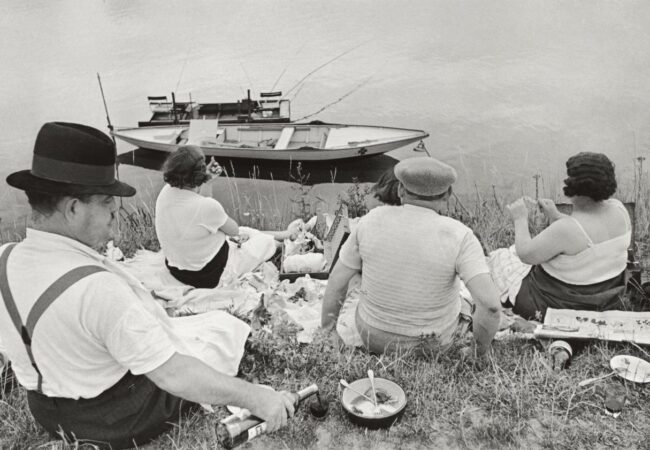Photography: Real and Imagined examines two perspectives on photography; photography grounded…

Exhibition: Pennsylvania Homecoming – Gregory Soltys
An exhibition of carbon prints.
I grew up in the Laurel Highlands region of Southwestern Pennsylvania in a small town called Latrobe. The Laurel Highlands is a popular area for hiking, fishing, camping, mountain biking, downhill and cross-country skiing, and other outdoor activities. It’s also an area of stunning natural beauty.
I’ve not lived there for 35 years. At 18 I left for college and then lived in the San Francisco Bay Area for 25 years before moving to Melbourne five years ago. I’d wanted to go back to visit my mom in June 2020, but the pandemic put a pause to that. Thankfully I had the opportunity to go for six weeks in June/July 2022. I was keen to capture the landscape of my youth with my Chamonix 4 x 5 camera.
Initially my plan was almost clinical in nature, to document favorite places of my childhood. But then it became something more. I hadn’t realized how much that landscape is a part of me and helped create who I am. When I returned to Melbourne with nearly 100 4 x 5 photos I wanted to do something with this body of work other than look at photos occasionally on my iPad. Thinking of how best to celebrate these images, off I went.
My passion is carbon transfer printing, a slow, laborious, somewhat precarious technique that is fraught with challenges. Each print can take up to a week to fabricate. Tiny imperfections remind us that they are handmade objects produced with great care. One aspect of carbon transfer printing I particularly like is once you learn the basic techniques you can go off in any direction. Prints can look dreamy and otherworldly, tack-sharp and photorealistic, or like recently discovered 150-year-old artefacts. Possibilities are endless.
Even though I live 10,000 miles away now this little corner of Southwestern Pennsylvania will always be my home.
Gold Street Studios & Gallery. Trentham East. Victoria. 21 February – 5 May 2024
Carbon printing process
The carbon printing process uses colour pigments producing one of the most permanent-coloured photographs. The use of pigment allows any colour photograph on almost any surface. The beautiful tonal scale resolves fine detail. It relies upon the ability of sensitized gelatin when exposed to U V light becoming insoluble in water. Exposure hardens the top surface, and the bottom layer remains soft. It must be transferred to a different support, or it will wash away from the original tissue support. This transfer process is carried out in warm water. The unexposed soluble areas are washed away proportional to the negative highlight and shadows to reveal the underlying final support. This creates a bas-relief effect, carbon transfers unique signature.
Carbon is a contact printing process that is labour-intensive, time-consuming and can be technologically demanding but returns a unique aesthetic beauty and great longevity.
History of carbon
Carbon was the first truly permanent photographic print process and evolved over years of discovery. From the late ninetieth century to first part of the twentieth century it was considered one of the elite photographic print processes. Gustav Suckow in 1832 discovered dichromate was light sensitive and in 1839 Mungo Ponton found paper coated with dichromate was light sensitive. It was Becquerel that discovered this sensitivity was dependent on organic matter such as gelatin and starch. Talbot discovered these colloids became insoluble when exposed to light the. Alphonse Poitevin built on Talbot’s discovery and made the first carbon print by adding carbon black to a mixture of dichromated gelatin in 1855. In 1859, based on earlier research by Ponton and Becquerel the theoretical base for carbon transfer was formed.
In 1864 Swan patented the process and became a supplier of carbon materials. In 1868 Swan sold his patent to John Robert Johnson and Ernest Edwards who formed the Autotype Company.
The process was later adapted to colour using pigments, by Louis Arthur Ducos du Hauron in 1868. Carbon printing remained commercially popular through the first half of the 20th century. By the end of the decade most of the major suppliers had abandoned the process. An exception was Hanfstaengl of Germany, a company that produced small quantities of carbon tissue and transfer papers for monochrome and three-color work as late as the 1980s.
Next Post: Exhibition: Surrounding – Julie Millowick
Previous Post: Workshop: C41 Colour processing



